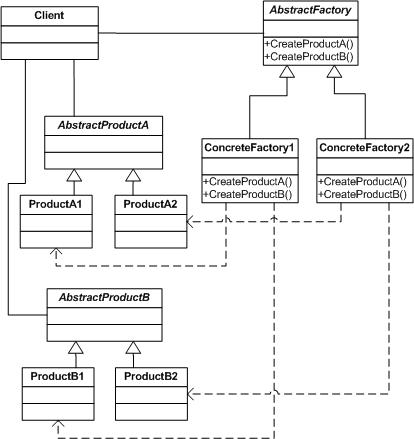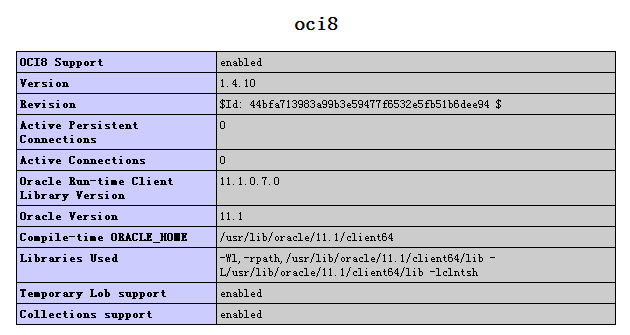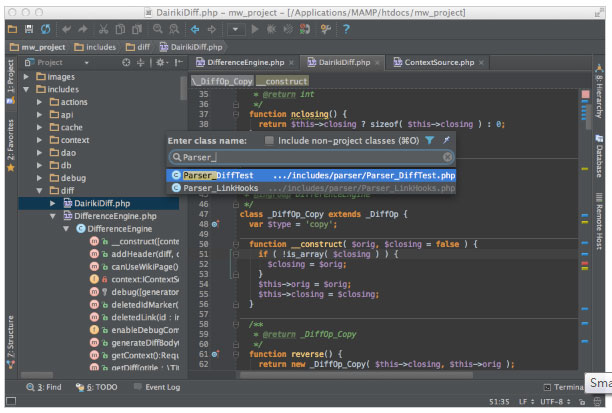|
|
在操作數(shù)據(jù)庫時(shí),使用關(guān)聯(lián)數(shù)組(associatively-indexed arrays)十分有幫助,下面我們看一個(gè)基本的數(shù)字格式的數(shù)組遍歷:
<?php
$temp[0] = "richmond";
$temp[1] = "tigers";
$temp[2] = "premiers";
for($x=0;$x<count($temp);$x++)
{
echo $temp[$x];
echo " ";
}
?>
然而另外一種更加節(jié)省代碼的方式是:
<?php
$temp = array("richmond", "tigers", "premiers");
foreach ($temp as $element)
echo "$element ";
?>
foreach 還能輸出文字下標(biāo):
<?php
$temp = array("club" => "richmond",
"nickname" =>"tigers",
"aim" => "premiers");
foreach ($temp as $key => $value)
echo "$key : $value ";
?>
php 手冊(cè)中描述了大約 50 個(gè)用于處理數(shù)組的函數(shù)。
2. 在 php 字符串中加入變量
這個(gè)很簡單的:
<?php
$temp = "hello"
echo "$temp world";
?>
但是需要說明的是,盡管下面的例子沒有錯(cuò)誤:
<?php
$temp = array("one" => 1, "two" => 2);
// 輸出:: The first element is 1
echo "The first element is $temp[one].";
?>
但是如果后面那個(gè) echo 語句沒有雙引號(hào)引起來的話,就要報(bào)錯(cuò),因此建議使用花括號(hào):
<?php
$temp = array("one" => 1, "two" => 2);
echo "The first element is {$temp["one"]}.";
?>
3. 采用關(guān)聯(lián)數(shù)組存取查詢結(jié)果
看下面的例子:
<?php
$connection = mysql_connect("localhost", "albert", "shhh");
mysql_select_db("winestore", $connection);
$result = mysql_query("SELECT cust_id, surname,
firstname FROM customer", $connection);
while ($row = mysql_fetch_array($result))
{
echo "ID:/t{$row["cust_id"]}/n";
echo "Surname/t{$row["surname"]}/n";
echo "First name:/t{$row["firstname"]}/n/n";
}
?>
函數(shù) mysql_fetch_array() 把查詢結(jié)果的一行放入數(shù)組,可以同時(shí)用兩種方式引用,例如 cust_id 可以同時(shí)用下面兩種方式:$row["cust_id"] 或者$row[0] 。顯然,前者的可讀性要比后者好多了。
在多表連查中,如果兩個(gè)列名字一樣,最好用別名分開:
SELECT winery.name AS wname,
region.name AS rname,
FROM winery, region
WHERE winery.region_id = region.region_id;
列名的引用為:$row["wname"] 和 $row["rname"]。
在指定表名和列名的情況下,只引用列名:
SELECT winery.region_id
FROM winery
列名的引用為: $row["region_id"]。
聚集函數(shù)的引用就是引用名:
SELECT count(*)
FROM customer;
列名的引用為: $row["count(*)"]。
4. 注意常見的 php bug
常見的 php 糾錯(cuò)問題是:
No page rendered by the Web browser when much more is expected
A pop-up dialog stating that the "Document Contains No Data"
A partial page when more is expected
出現(xiàn)這些情況的大多數(shù)原因并不在于腳本的邏輯,而是 HTML 中存在的 bug 或者腳本生成的 HTML 的 bug 。例如缺少類似 </table>, </form>, </frame> 之類的關(guān)閉 Tag,頁面就不能刷新。解決這個(gè)問題的辦法就是,查看 HTML 的源代碼。
對(duì)于復(fù)雜的,不能查到原因的頁面,可以通過 W3C 的頁面校驗(yàn)程序 http://validator.w3.org/ 來分析。
如果沒有定義變量,或者變量定義錯(cuò)誤也會(huì)讓程序變得古怪。例如下面的死循環(huán):
<?php
for($counter=0; $counter<10; $Counter++)
myFunction();
?>
變量 $Counter 在增加,而 $counter 永遠(yuǎn)小于 10。這類錯(cuò)誤一般都能通過設(shè)置較高的錯(cuò)誤報(bào)告級(jí)別來找到:
<?php
error_reporting(E_ALL);
for($counter=0; $counter<10; $Counter++)
myFunction();
?>
5. 采用 header() 函數(shù)處理單部件查詢
在很多 Web 數(shù)據(jù)庫應(yīng)用中,一些功能往往讓用戶點(diǎn)擊一個(gè)連接后,繼續(xù)停留在當(dāng)前頁面,這樣的工作我叫它“單部件查詢”。
下面是一個(gè)叫做 calling.php 的腳本:
<!DOCTYPE HTML PUBLIC
"-//W3C//DTD HTML 4.0 Transitional//EN"
"http://www.w3.org/TR/html4/loose.dtd" >
<html>
<head>
<title>Calling page example</title>
</head>
<body>
<a href="action.php">Click here!</a>
</body>
</html>
當(dāng)用戶點(diǎn)擊上面的連接時(shí),就去調(diào)用 action.php。下面是 action.php 的源碼:
<?php
// 數(shù)據(jù)庫功能
// 重定向
header("Location: $HTTP_REFERER");
exit;
?>
這里有兩個(gè)常見的錯(cuò)誤需要提醒一下:
調(diào)用 header() 函數(shù)后要包含一個(gè) exit 語句讓腳本停止,否則后續(xù)的腳本可能會(huì)在頭發(fā)送前輸出。
header() 函數(shù)常見的一個(gè)錯(cuò)誤是:
Warning: Cannot add header information - headers already sent...
header() 函數(shù)只能在 HTML 輸出之前被調(diào)用,因此你需要檢查 php 前面可能存在的空行,空格等等。
6. reload 的問題及其解決
我以前在寫 php 程序時(shí),經(jīng)常碰到頁面刷新時(shí),數(shù)據(jù)庫多處理一次的情況。
我們來看 addcust.php:
<?php
$query = "INSERT INTO customer
SET surname = $surname,
firstname = $firstname";
$connection = mysql_connect("localhost", "fred", "shhh");
mysql_select_db("winestore", $connection);
$result = mysql_query($query, $connection);
?>
<!DOCTYPE HTML PUBLIC
"-//W3C//DTD HTML 4.0 Transitional//EN"
"http://www.w3.org/TR/html4/loose.dtd" >
<html>
<head>
<title>Customer insert</title>
</head>
<body>
I've inserted the customer for you.
</body>
</html>
?>
假設(shè)我們用下面的連接使用這個(gè)程序:
http://www.freelamp.com/addcust. ... &firstname=Fred
如果這個(gè)請(qǐng)求只提交一次,OK ,不會(huì)有問題,但是如果多次刷新,你就會(huì)有多條記錄插入。
這個(gè)問題可以通過 header() 函數(shù)解決:下面是新版本的 addcust.php:
<?php
$query = "INSERT INTO customer
SET surname = $surname,
firstname = $firstname";
$connection = mysql_connect("localhost", "fred", "shhh");
mysql_select_db("winestore", $connection);
$result = mysql_query($query, $connection);
header("Location: cust_receipt.php");
?>
這個(gè)腳本把瀏覽器重定向到一個(gè)新的頁面:cust_receipt.php:
<!DOCTYPE HTML PUBLIC
"-//W3C//DTD HTML 4.0 Transitional//EN"
"http://www.w3.org/TR/html4/loose.dtd" >
<html>
<head>
<title>Customer insert</title>
</head>
<body>
I've inserted the customer for you.
</body>
</html>
這樣,原來的頁面繼續(xù)刷新也沒有副作用了。
7. 巧用鎖機(jī)制來提高應(yīng)用性能
如果我們要緊急運(yùn)行一個(gè)報(bào)表,那么,我們可以對(duì)表加寫鎖,防治別人讀寫,來提高對(duì)這個(gè)表的處理速度。
8. 用 mysql_unbuffered_query() 開發(fā)快速的腳本
這個(gè)函數(shù)能用來替換 mysql_query() 函數(shù),主要的區(qū)別就是 mysql_unbuffered_query() 執(zhí)行完查詢后馬上返回,不需要等待或者對(duì)數(shù)據(jù)庫加鎖。
但是返回的行數(shù)不能用mysql_num_rows() 函數(shù)來檢查,因?yàn)檩敵龅慕Y(jié)果集大小未知。
php技術(shù):PHP 和 MySQL 開發(fā)的 8 個(gè)技巧,轉(zhuǎn)載需保留來源!
鄭重聲明:本文版權(quán)歸原作者所有,轉(zhuǎn)載文章僅為傳播更多信息之目的,如作者信息標(biāo)記有誤,請(qǐng)第一時(shí)間聯(lián)系我們修改或刪除,多謝。



